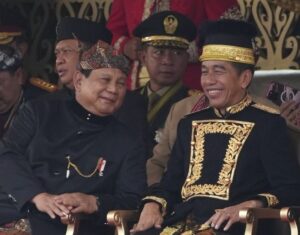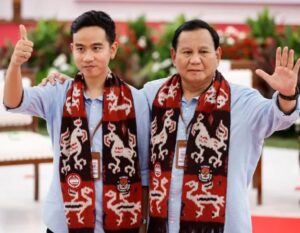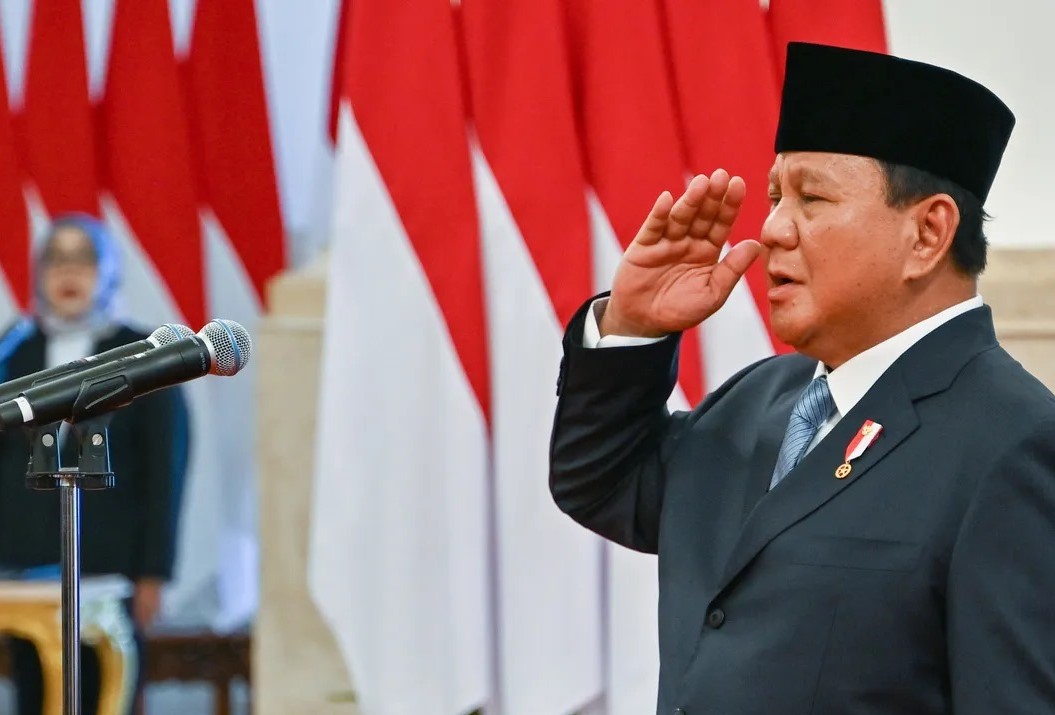
Dr. Mehmood Ul Hassan Khan
The Indonesian President Prabowo Subianto in his maiden speech specially emphasized on building of human capital for a prosperous Indonesia which vividly reflected the strategic importance of humans in the economic development of the country. Moreover, it would be a strategic asset to come out of the prevailing middle income trap, moving towards Indonesia 5.0 and gearing towards the ultimate goal of a prosperous Indonesia.
Universally, the human development index measures the quality of human resources in one country based on three components, namely the education index, health index and income per capita index and Indonesia is not any exception.
Interestingly, Indonesia’s aging population currently stands at around 20 million, or approximately 10 percent of the total population. By 2026, this number is estimated to hit 33 million. This aging population, along with other shifts in demography and challenges such as disasters and pandemics, require Indonesia to rethink how vulnerable groups can be protected by further reforming its social protection policies and develop its human capital for prosper Indonesia in the days to come.
Ironically, female labor force participation is only 51 percent meanwhile, the male labor force participation rate is 82 percent. The high level of discrimination, especially the issue of wages for women workers, is one reason why female labor force participation is still low. It fears that the increasingly strong discrimination will reduce the interest of women to be active in the labor market. There must be an equalization effort.
Legal protection for women in Indonesia is still weak in many ways. National legislative gaps such as lack of equal inheritance rights for women and lack of protection in the workplace, several local and regional regulations conflict with national standards and last but not least, many women work in the informal sector; 24 million Indonesian women, 54 percent of female workers, work informally, and therefore have no legal protection and often face discrimination which should be rectified through improving infrastructure and using wider digital technology.
Resultantly, many women drop out of the labor market after marriage and childbirth, and only return as small-scale entrepreneurs or self-employed workers. It is suggested that if Indonesia increases public expenditure on childcare services to 0.5 percent of its GDP from its current share of 0.04 percent, the female labor force participation rate would increase to 58 percent and the economy would grow by an additional $62 billion or 0.7 percentage points. Supporting investments in the care economy can deliver long-term human capital gains for the future, as well as leading to improvements in employment and the earnings of women, improvements in firm productivity, and job creation.
Unfortunately, labor productivity growth has fallen below average economic growth in the past decade and even declined before the COVID-19 pandemic hit. To ensure more productive labor it is critical the country attains a state of inclusive and sustainable human development by addressing issues such as the skills mismatch access to health and social protection and provide a healthier environment for workers.
More focus should be given to addressing skills mismatches and secondary and tertiary education enrollment. It seems that Indonesia’s workforce is composed primarily of elementary and middle school graduates.
Many official reports confirm that many secondary school graduates lack marketable skills, with the unemployment rate highest for workers at this level of education. Nevertheless, the government has developed schemes to ensure more equitable access to learning opportunities such as the “Indonesia Smart Program” and other financing programs to access education.
At the same time, ministries under the Coordinating Ministry of Economic Affairs have also launched initiatives to improve Indonesia’s Technical and Vocational Education and Training output and enhance skills matching in the labor market. Therefore, labor market information funding schemes curriculum alignment learning quality enhancement and monitoring and evaluation should be further implemented at every level.
Additionally, universal health coverage is essential to ensure physical well-being. Equitable health system coverage remains a challenge and the country needs to improve health system availability.
Ironically, Indonesia had only 0.7 physicians per 1,000 people in 2021 less than the World Health Organization’s minimum requirement of 1 physician. It has also worked to promote Indonesia’s National Health Insurance (JKN) and regional health-care services. Despite its broad coverage the survival of the JKN system remains a challenge which should be resolved as soon as possible.
The new government should focus more on social protection for the striving middle class and a responsive system in the country. It has established poverty-related social protection programs. Notwithstanding, existing schemes do not adequately cover around half of Indonesia’s population who spend approximately twice or less the national poverty line each month leaving them particularly vulnerable to shocks.
The setup of a food estate and ensuring farmers’ well-being to attract the younger generation to agriculture should also be prioritized through promoting equitable fertilizer distribution, ensuring that all farmers received an optimal exchange rate.
The successive governments of Indonesia worked very hard for the development of human resources. These governments initiated many programs to reduce stunting issues and set a target to decrease the stunting cases to 10 percent in 2025.
Education is directly correlated to economic diversity, industrial productivity, labor earnings and individual income alike. Numerous empirical evidence has shown that the relationship between education and earnings, especially in Singapore, Vietnam, Thailand, Australia and many countries around the globe confirm it.
Unfortunately, it seems that the lack of focus and clear strategies to develop its education sector is adversely affecting its human capital development in Indonesia which must be revisited, redrafted, re-designed and re-institutionalized in the country.
Indonesia’s education policies seem to be “supply-driven” rather than demand-driven. Lack of understanding of the characteristics, the needs, and the problems of human capital is the main culprit. These supply-driven policies are inadequate to respond to market demand and often they are poorly tailored for developing the needed skills and knowledge accumulation.
In this regard the policy makers of Indonesia must study the German Model of Higher Education preparing and producing students for propelling Germany’s industrial, digitalization and sciences & space sectors in the right direction.
Even Philippine Model of Technical Education (combing informal & formal education), Singapore Model of Higher Education or Vietnam Model of Skilled Education must be thoroughly studied, incorporating in Indonesian model of prevailing education system transforming it from resource based to knowledge based economy contributing to achieve targets of Vision 2045 a guarantor of prosper Indonesia.
While writing a comprehensive book on modern Indonesia I noticed that unfortunately, Indonesia’s universities are also largely isolated. They do not establish solid linkages with international higher learning networks in research and development. Moreover, their selection of subjects and curriculum is rigid and incompatible with emerging and current industry’s needs.
That is one of the main reasons that Indonesia’s education system is not enabling to produce a higher number of skilled workers but also relevant and useful skills (thinking skills, communication skills, learning skills, and adaptation skills).
From a human capital perspective, the first important step that the new Indonesian government should take to promote the manufacturing sector is to enhance the productivity of the workforce by improving the education and training system.
Currently, the government is pursuing the Long Term Development Plan (RPJP) 2005-2025, the Medium-Term Development Plan (RPJM) 2009-2014, and the latest Master Plan for Acceleration and Expansion of Economic Development of Indonesia (MP3EI). In order to implement these plans, the government has launched several policy instruments to promote human capital supported by various ministries and non-ministry institutions. It is suggested that the new government should initiate a holistic and comprehensive national policy to further strengthen social development in the country which would have a positive impact on the building of a qualitative human development in the days to come.
Now let us discuss regional countries’ human capital development integrated strategies which may be implemented in Indonesia. Singapore and Vietnam have diversified and dynamic human resources models in which their human resource strategies have been continuously revised and adjusted in conjunction with other national strategic economic policies.
Take the example of Singapore which considers human resources as the single most important strategic capital. A small country with virtually no natural resources no surplus land, it has become one of the most developed countries in Asia primarily due to its strong emphasis on developing human resources and for continuously making significant investments in its human capital through various short, medium and long terms initiatives, policies, plans and projects including the Human resource development (HRD), the Skills Development Levy, the Skills Re-development Program (SRP), Lifelong Learning Fund, The National Wages Council (NWC), multi-departmental approach to its national policies for HCD and last but not least, the formation of Workforce Development Agency (WDA) as a statutory board under the Ministry of Manpower has completely transformed human resources of Singapore which has now icon of innovation, modernization, digitalization and qualitative services in the region.
Moreover, it internally linked its education system integrally to its HRD strategies. The education system is structured on meritocracy and a series of filters that stream each cohort of students into the relevant vocations and institutions.
The Basic Education for Skills Training (BEST) program, the Adult Cooperative Training Scheme (ACTS) and the Training Initiative for Mature Employees (TIME) program enables elderly workers to take the National ITE Certification (NITEC).
Thus the new Indonesian government should study and follow the Singaporean human resource development model and accordingly incorporate in its country.
In Vietnam, human capital is developed, used, and retained as a public commodity to increase national competitive advantage. It can be measured through numbers of graduates, degrees and quotas. It also represents the government’s efforts in participating in the global race for talent and changing Vietnam’s political image as a democratic country. Highly skilled workforce is supposed to possess foreign language proficiency.
Its government is emphasizing mainly on education and modern sciences, export industry incentives to experts/professionals, labour migrants and incentives to stop brain & drain enabling it to develop a holistic and comprehensive human resources development model in the country creating numerous matching boxes with its modernization and qualitative industrialization.
Even the Cuban model of free education, free healthcare, and a free home should also be studied and accordingly readjusted for achieving the optimal levels of human resources development in Indonesia. Food and utilities are subsidized. Children and the elderly are cared for through state programs. And the retirement age is low: for women it’s 60 and for men it’s 65.
It seems that the Indonesian Islamic Banking industry is also confronting the lack of effective human capital development. The modern century is the era of a knowledge-based economy, rather than a resource-based economy system, and to achieve this sustainable development goal only by improving Islamic finance quality education that will meet the Islamic bank’s highly skilled demands labor marker and also will increase productivity and improve performance by well-trained and educated employees’ competency.
Islamic banks’ contribution to Indonesia districts’ economic growth and poverty alleviation is well executed paying its socio-economic dividends which may also be used to improve human resources. Halal industry and Islamic fashion and garments industries may also be included into robust human resources development in Indonesia.
Thus the new government of Indonesia should devise the new road map or model and prioritise the development of high-quality human resources in the country through structural reform, innovation and digitalization, sustainability and climate change, and human resource economics, aiming to serve as a platform to advance reforms and sustainable development in Indonesia.
Uneven development progress is leaving the poorest behind, accelerating inequality, and stoking political polarization in the country. The result is a dangerous gridlock that must be urgently tackled through collective action.
Around 45 percent of Indonesia’s economy is being attributed to only three sectors, namely manufacturing, wholesale and retail trade, and agriculture. These three biggest sectors in the economy continued to grow below overall economic growth.
It seems that the new Indonesian government should initiate a more extensive and efficient social protection in the country to enable aspiring Indonesians to enter and remain in the middle class. It needs flexible finance and dynamic, regularly updated targeting data to quickly identify and reach potential program beneficiaries to increase coverage to the vulnerable middle class and create a responsive social security system.
In terms of national politics, Prabowo’s government should provide political stability against violence, social unrest and regional conflicts. However, some development challenges such as lowering inequality gaps across different socio-economic backgrounds, ethnicities, gender and geographical regions, improving quality of education which translates to producing competitive and well-equipped graduates to meet the labour market qualification needs should be tackled through holistic and comprehensive policies in the country. So Indonesia should be able to manage its opportunities and challenges to reach its dream to be a resilient economy in 2045.
Indonesia has a relatively young population and mobile and the middle class alone is around 135 million which will be a strategic value addition in achieving the desired goals of socio-economic prosperity, connectivity, digitalization, qualitative industrialization, modernization and above all more liberalized democracy in the country in the days to come. Thus Prabowo’s government should focus on the building of a qualitative human capital in the country through jobs and institutionalization of the knowledge based economy.
Indonesia’s private sector is vast, home to 66 million businesses, of which 9 million are formally registered. It is predominantly composed of micro, small, and medium-sized enterprises (MSMEs), with a significant presence in wholesale and retail (54 percent), accommodation and food services (20 percent), and the processing industry (14.5 percent). Thus Prabowo’s government should urgently further develop public-private partnership in Indonesia so that desired goals of Vision 2045 may be achieved.
Many research studies clearly indicate that Indonesia has a similar problem to America is the economic gap between the rich and the poor which is too large. In America 10 percent of U.S. households own 69 percent of the nation’s wealth whereas in Indonesia 65 percent of national wealth is in the hands of 10 percent of the population. In the United States this has had a detrimental effect on polarizing the nation and is a challenge to its democracy which must be reduced by the upcoming new government in Indonesia.
The author suggests that the new government must invest in Human Capital through education and the health and welfare system. Further, investment policies should be less complicated so that foreign investors do not encounter bureaucratic difficulties. It is also important to focus on infrastructure for underdeveloped islands like North Sulawesi, Kalimantan and several areas in Sumatera.
Obviously, Indonesia has all the basic ingredients to become a high-income country in 2035-2040 but the new government needs comprehensive overhauling and vigilance. Although the Omnibus Law is heavily criticized, hopefully Prabowo’s government should implement it so that the country may move out of middle-income status.
Therefore, Prabowo’s government focus should be on human capital and education, especially among the younger generation, while poverty levels must be reduced and infrastructure must be innovated, including in areas outside Java Island. The bureaucracy must be facilitated, which may be facilitated by the Job Creation Law.
Human capital is a critical national asset. Indonesia has more than 27 million people, 147.7 million of which are in the workforce. Some 8 million individuals are unemployed in Indonesia and the national rate of Indonesians who are not participating in education, employment or training is notably high at 23.22 per cent. Graduates from higher education and secondary school face higher unemployment rates than those with lower educational attainment, leading to widespread idleness.
The new government must seek strategies to reduce unemployment and inequality through skill development programs. Indonesia’s National Labour Force Survey revealed that just under 90 per cent of the workforce have not received any workforce training. Together, these factors drag down Indonesia’s productivity rate, which was only the fifth highest in Southeast Asia in 2020.
Evaluation, through either internal or independent external sources, is critical. It aims to enhance the competence, productivity, competitiveness and entrepreneurial development of Indonesia’s workforce.
This large-scale skill development initiative successfully reached over 5 million in the first year alone, covering all districts and cities across provinces in Indonesia despite the disruptions caused by the COVID-19 pandemic. A further 17.5 million recipients were reached through online training and provided with digital wallet incentives through fintech companies and conventional banks.
Suggestions
Human capital increased significantly in Indonesia between 1995 and 2020 but stalled toward the end of the period. There is abundant global evidence showing that investments to close the human capital gap are productive and lead to significant returns.
In Nigeria, workers’ earnings increased by 10 percent within the span of a few weeks after participating in a malaria testing and treatment program. In Kenya, a deworming program led to reduced school absences for children and ultimately, 20 percent higher wages as working adults.
The new Indonesian government should also study the model of Czech Republic spending on education and health which has contributed to human capital development. The Chinese model of eradication of extreme poverty rescuing more than 850 million people through diversified but integrated policies and education budgets may also be followed as it reduces dependence on natural resources. Health budgets have also positively impacted human capital development in Iran which would also be analyzed.
Closing the human capital gap will mean that more Indonesian children will be born healthy, ready to learn once they start school, maximize what they learn, get better jobs, and remain healthy throughout their lives. Altogether, these achievements will give all Indonesians a chance to improve the quality of life for themselves, their families, their communities, and for those in the future generations to come.
1. Human capital may be further enhanced through investments in improving workers’ health and education and new technologies to boost productivity.
2. Diversification of human capital away from overly concentrated sectors, like services in Indonesia, to Islamic banking, tourism, food and manufacturing must be included.
3. Indonesia continues to learn from other successful experiences stunting reduction in Peru, improving learning outcomes in Vietnam, and successful social protection programs in Mexico and the Philippines.
4. Leadership and commitment from all levels of the new government should be well coordinated to start new programs and resources from different government agencies to help families and children receive all the services that they need to maximize their human capital.
5. Sincere efforts should be initiated to avoid the learning crisis and uneven health outcomes through improving the basic and vocational education systems so that Indonesia’s youth graduate with the right set of skills for Industry 4.0 and have a better chance to compete for good jobs, will be key to Indonesia’s future growth and development.
6. Main focus should be given to improve student learning. Prabowo’s government should link the A National Education Quality to a strengthened assessment system of student learning, and include education spending data at all government levels to promote transparency, effectiveness and efficiency in the sector.
7. On the health front increasing tobacco taxes will have immediate health benefits, and the revenues can be used to strengthen preventative healthcare and implement a strong social protection system which should be imposed in the new government.
8. To help build resilient and responsive health, education, and social protection systems to stimulate economic growth and reduce poverty the new government should start integrated reforms in education, skills development, health, and social protection aligned with the Sustainable Development Goals (SDGs).
9. The new government must make efforts to improve educational attainment, upskilling, and reskilling, the government has implemented market-responsive skills development programs for unemployed youth and adults which must be further integrated and coordinated.
10. Inclusion of more than 30,000 teachers, the majority of whom are women, have been trained as “learning leaders” as part of the Guru Penggerak master teacher program, while 2.9 million teachers have been provided access to the master teacher’s digital platform on teaching and learning resources using their smartphones, laptops, and desktop computers is the right policy.
11. The Indonesia Cyber Education Institute has established an innovative digital credentialing system for its world-class and market-oriented online higher education courses which should be further expanded.12. The new government should further expand the scope, utility and importance of the primary care system, leading to health promotion and community empowerment, and expanding community-based maternal and child health care.
13. The government should also improve the delivery of social protection services to the poor and vulnerable groups through measures to implement the unemployment benefit program and strengthen implementation of its conditional cash transfer program.
14. Sincere efforts should be initiated to reduce emerging economic inequalities and social marginalization in 34 provinces and 514 districts in Indonesia.
15. The new government should work on the development of marketable skills of the women in the country through refreshing courses, education, health, job security, technical education and last but not least, new job generation especially in the Islamic Fashion and garment Industry, Child Care Industry, Hospitality, Tourism and health sector etc. The new government should develop Community-Based Tourism (CBT) in Rural Tourism or Village Tourism (VT) enabling the women to earn more and contribute more in the national economy.
16. There are some 37,000 Islamic madrasas in Indonesia which need a new national policy of further integration, development, upgradation, skills development and purposeful inclusion in the mainstream economic development and social cohesion.
17. Further development of the Blue Economy may be another sector for the building of human capital in Indonesia and the new government should also focus on it.
18. Development of the metal & mining sector may also provide a strategic cushion for the building of human capital in Indonesia which should be explored and diversified by the new government in the days to come.
19. The new government should focus on green technologies, Islamic banking and vaccine banks for the building of human capital in the country.
20. Indonesia has the fourth largest number of unbanked people (individuals who are old enough but do not have a bank account) in the world, at 97.74 million, or 48% of the country’s adult population. Thus the new government must start a country-wide drive of Financial Inclusion as a mission to empower all levels of society through fair and equal access to financial services inching towards human capital development.
21. For greater social development, economic stability, ethnic diversity and political sustainability the new Indonesian government should initiate many integrated and coordinated policies to “Democratizing Wealth and Resources” in the country creating greater good for all the common people.
22. The new government must work for the inclusion of the informal economy into the formal domain which would have multiplier socio-economic effects.
23. Proper development of the Micro, Small and Medium Enterprises (MSMEs) is badly needed because more than 60 percent of Indonesia’s workforce makes a living in the informal sector where most MSMEs operate.
24. The new government should work to reduce the symptoms of poverty and poor economic growth, and negative effects of the state tax revenue, market structure, and competition. (The author is President Center for Pak-China Corridor of Knowledge, Executive Director, Center for South Asia & International Studies (CSAIS) & Regional Expert, Indonesia, China, CPEC, BRI)


